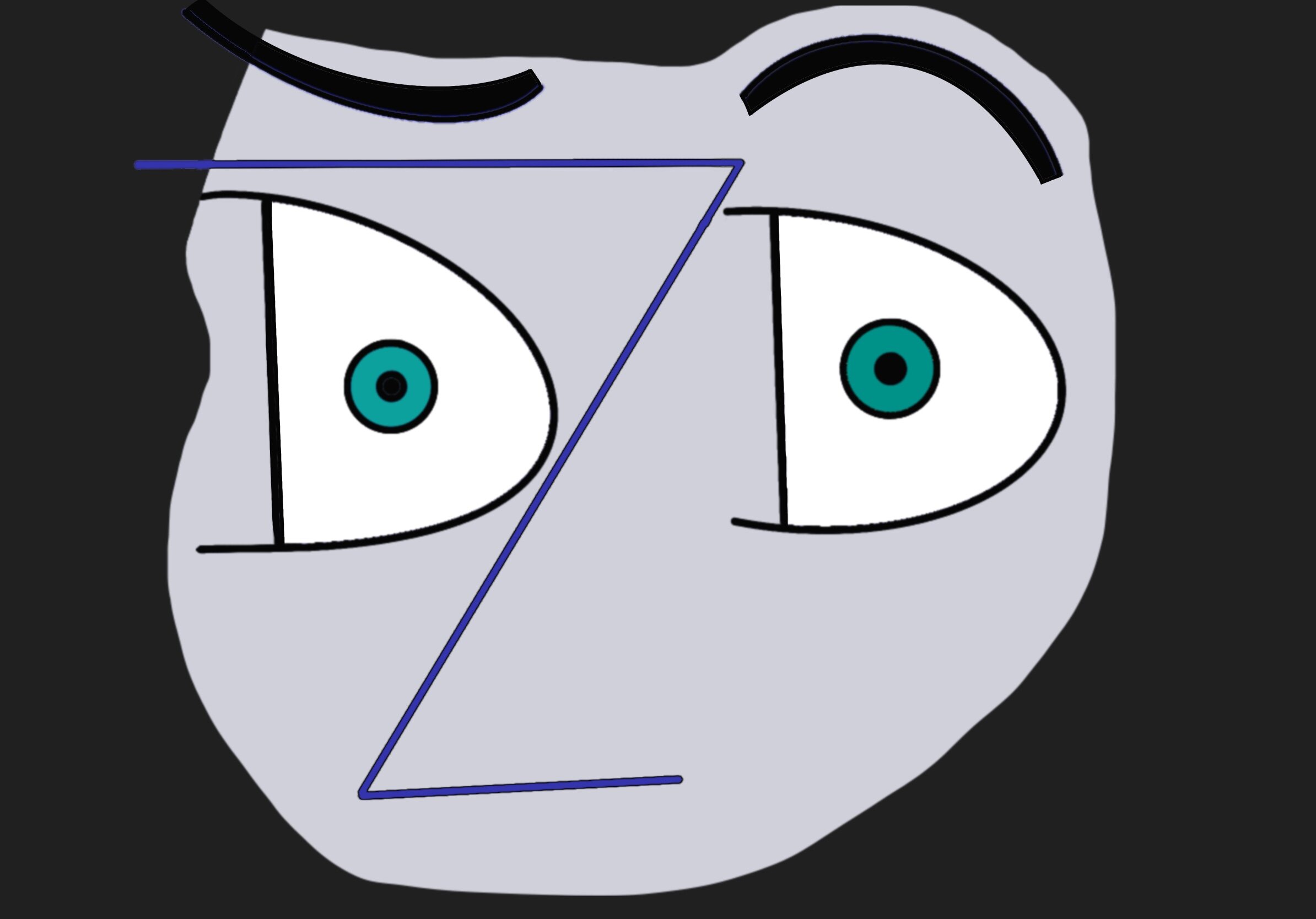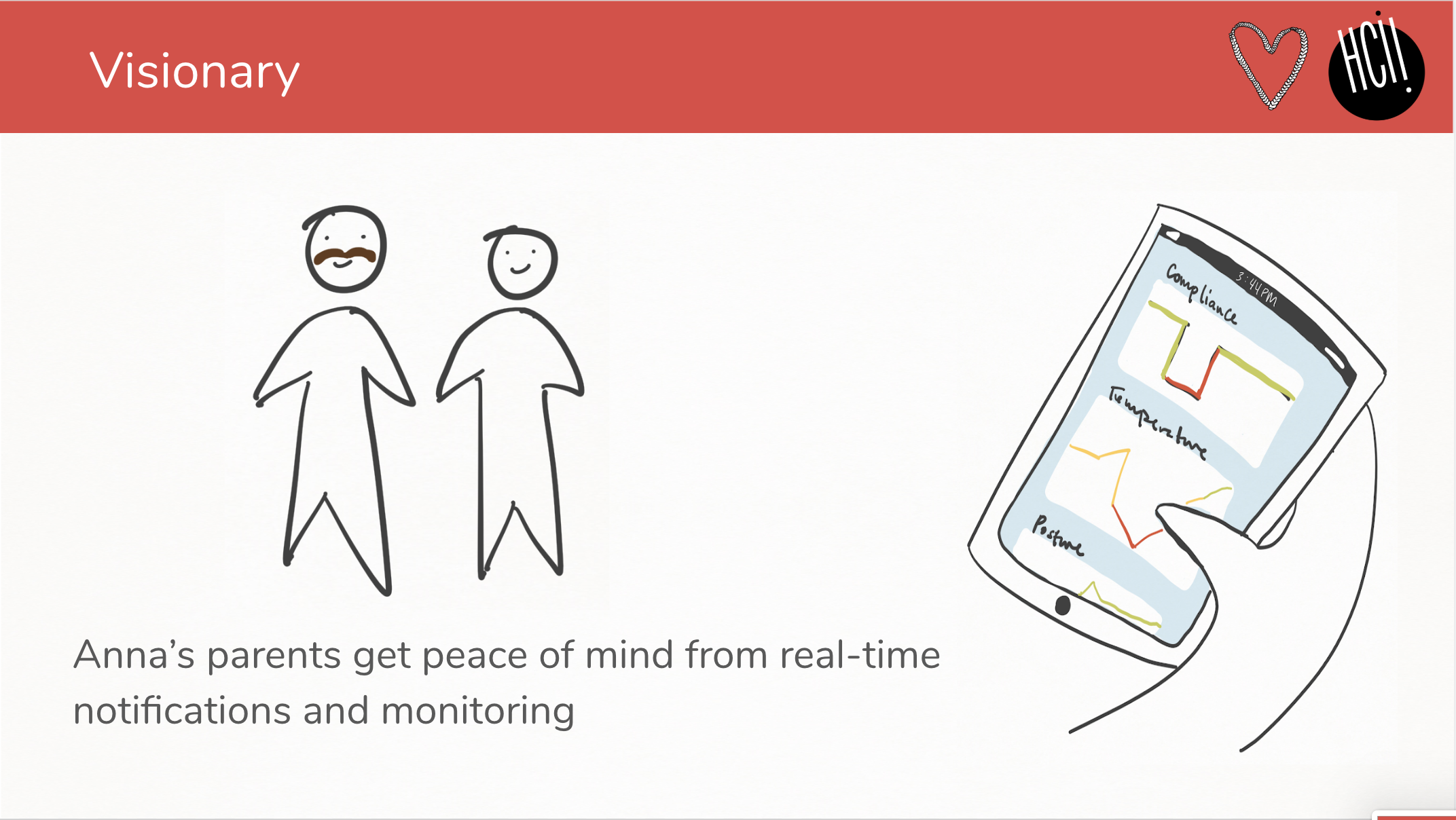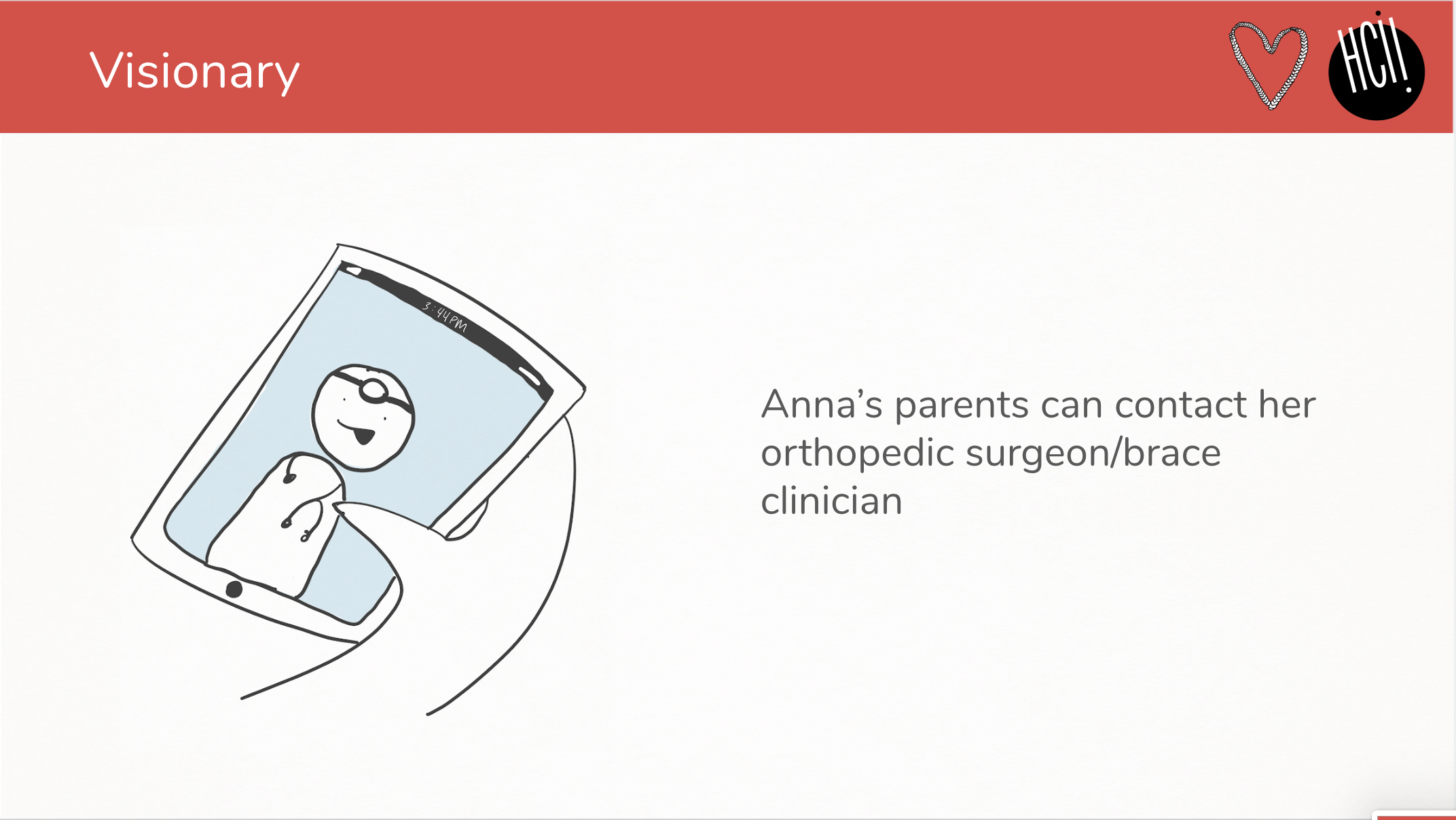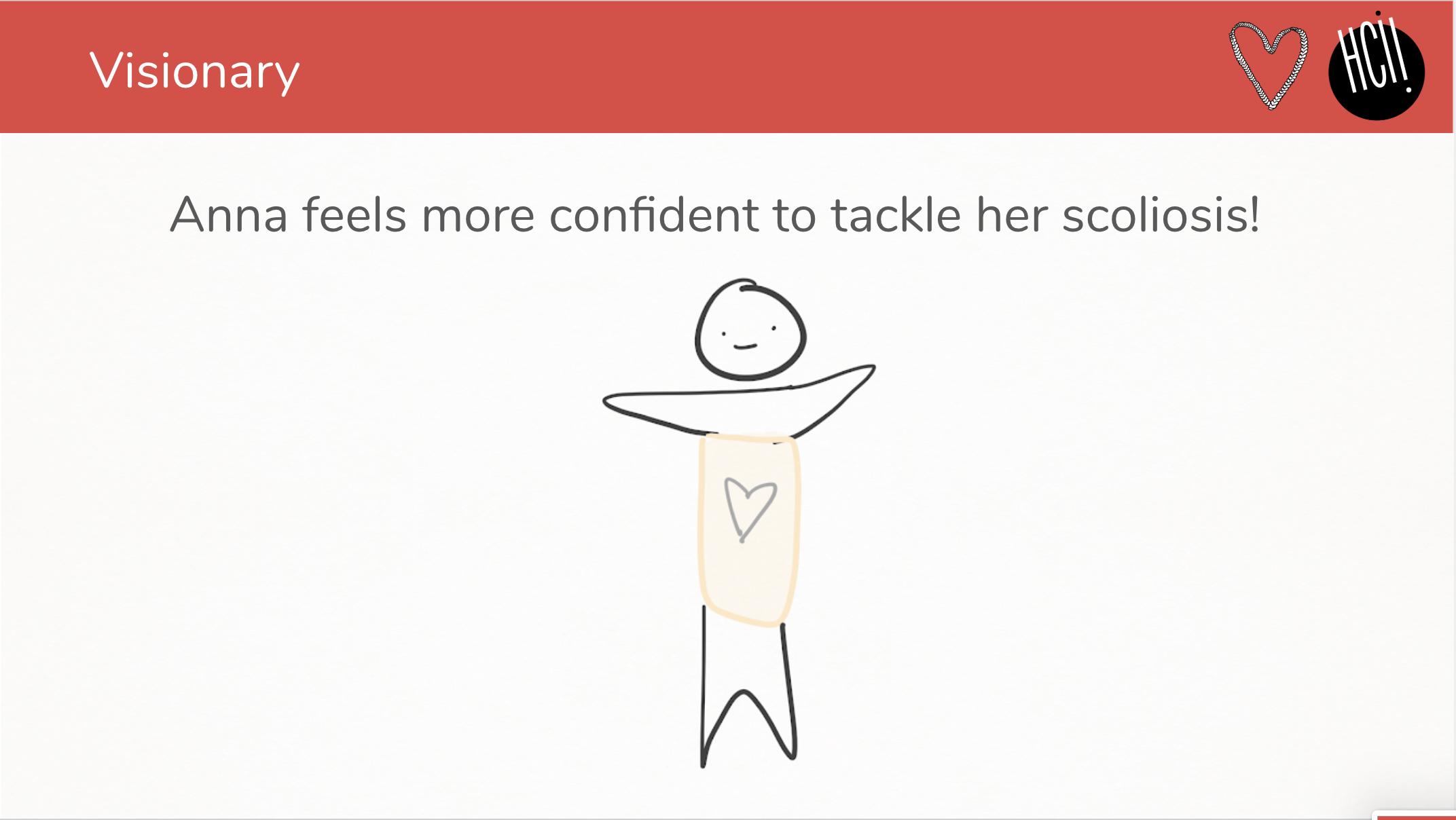Embrace
January 2018 - May 2018
Role: Lead Experience Designer / Front End Developer
Tools & Frameworks: HTML/CSS/JS + Apache Cordova
Embrace is a pneumatically assisted smart brace, integrated with IoT technology, to enhance comfort and maximize doctor-patient synergy. A thirteen year old scoliosis patient came in with her parents at the start of this project to help contextualize scoliosis and its known treatments. Currently, brace technology is nearly half a century old, and causes rashes, swelling, bruises, and overheating. Additionally, patients have to wear uncomfortable braces for weeks before possibly being told that the brace was improperly molded, or worn, and will have to start the process over. Moreover, the treatments are incredibly stigmatizing and socially inhibiting, posing challenges for adolescents as they enter maturity. A technology enhanced facelift for this outdated treatment was developed.
Stakeholders
Patients
Goal: Encourage consistent brace-wearing habits while minimizing discomfort in young boys and girls. Put power in the patient’s pocket to keep them motivated and informed about their treatment plan.
Doctors
Goal: Send weekly reports to doctors, wirelessly, instead of waiting months for in-person appointments. Keep doctors in the loop with real time information about treatment effectiveness.
Parents
Goal: Enable brace-wear monitoring to help encourage young patients to grow brace-wearing habit. See real-time information about their child, to know they’re doing alright.
For Patients
Patients get access to a mobile application with integrated metrics and trends about their brace wear. More importantly, patients are connected to other patients through forums, to help inspire and motivate younger patients to wear their brace more consistently, and overcome social stigmas.
For Doctors
Doctors get access to patient data, synced daily, in order to monitor usage and make future treatment plan decisions remotely. This enables faster intervention in the event that posture angle and brace pressure are insufficient, or if humidity and temperature rise too quickly, indicating an uncomfortable brace fit.
For Parents
Parents are kept in the loop, constantly, and don’t have to pepper their children with questions about brace wear. This solution is less stigmatizing, while providing parents with more comfort in knowing their child is following the treatment plan.
Process - Ideation
Brainstorming
The Rapid Prototyping of Computer Systems team spent significant time interviewing the patient, her parents, and multiple brace makers and doctors to first contextualize the design process. It became clear that the scoliosis brace industry required a paradigm shift in order to encourage brace wear, especially since young children were the most afflicted patient group. The biggest challenge was to first understand the mechanics of scoliosis and its treatments, to understand how to maximize comfort in novel ways.
Storyboard & User Personas
We created personas for our users, and storyboarded use cases for possible new innovations. We walked through a number of scenarios, boiling down the essential functions and flows, and eventually white-boarded rough sketches of the application and brace.
Prototyping
System Architecture
I proposed the idea of a pneumatic brace architecture, with soft fabric inflated by air bladders to 3-5 PSI. This was a similar pressure profile that hard, plastic braces achieved - except this brace was comfortable. This system was multi-faceted, spanning 3 teams: hardware, front end, and backend. From the hardware angle, an airbag was accompanied with a pressure sensor, controlled by the I/O of an Arduino micro-controller. All of this is sent to the phone over a Bluetooth Low Energy connection, and then piped to cloud storage for processing.
Hardware + Software
The main challenge was to ensure that software could actually control and monitor the brace pressure, wirelessly, in real time. A mobile application was developed with Cordova, and linked to the Arduino controller running the brace. We mapped the pressure sensors to a 7x15 pressure sensor array, sown into the brace. Applied pressure could then be visualized and color graded solely from the app.
Reflection
This project was a joy to work on, as it tested my ability to work with stakeholders and teammates with diverse sets of perspectives, skills, and goals. This was a fun challenge and test of my creativity, and I’m glad we were able to provide immense value to the stakeholders, while having a blast developing a novel medical device. I’d especially like to thank my team members, whom I learned the most from: Emily Wu, Abhishek Tayal, Mohona Sengupta, Gauri Agarwal, and Danielle Hu.












